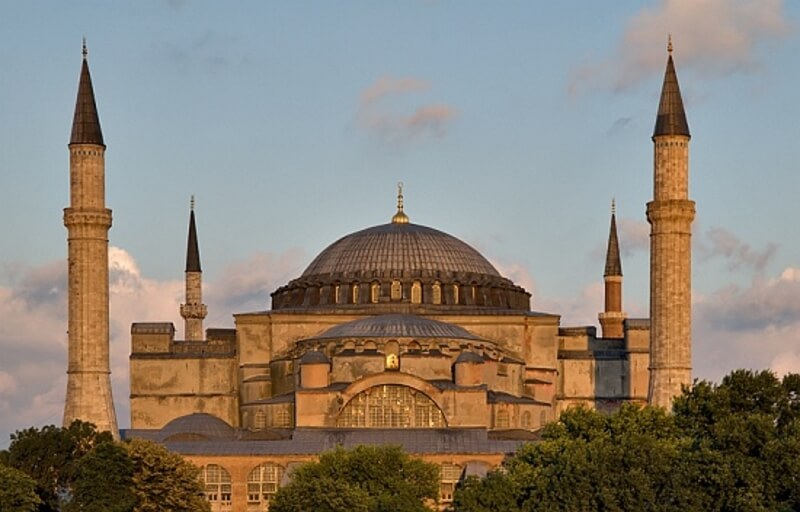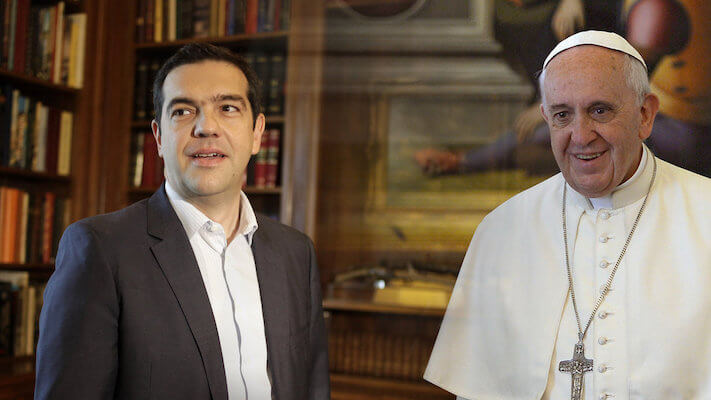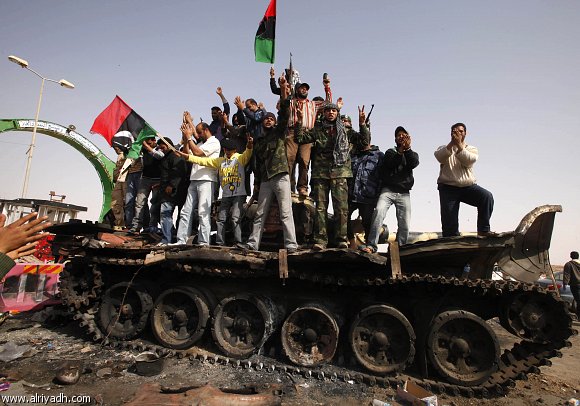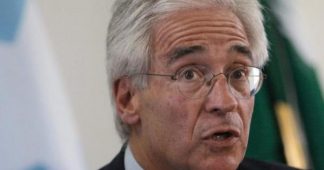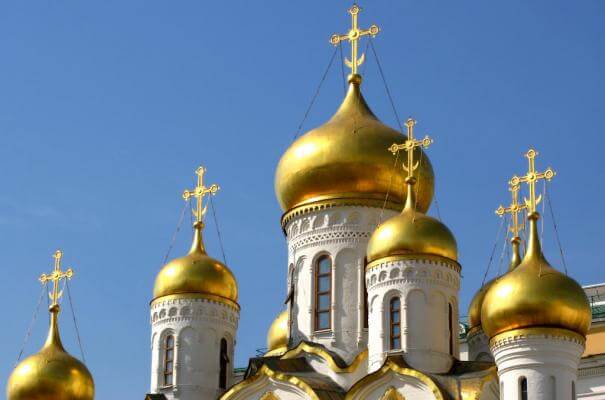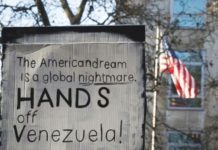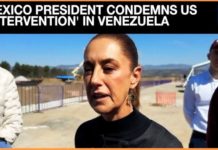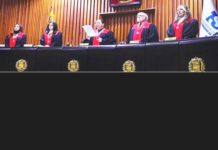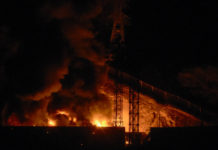By George Dimitrakopoulos
“….. the most perfect and beautiful church which has yet been erected by any Christian people….”
James Fergusson in “ A History of Architecture in All Countries”
The recent decision of the Turkish Authorities to permit the reading of the Koran during the Ramadan period in the Church of Haghia Sophia coupled with the daily call for prayer by the Moslem priest, caused the immediate reaction of the Greek Ministry of Foreign Affairs which protested to the Turkish Authorities and informed the International Community about this new “effort” to convert the Church to a Mosque thus altering it’s historically recognized nature and violating all regulations concerning the World Heritage Sites scheme which has been created by UNESCO after the Second World War and which includes the Church of Haghia Sophia ( Turkey had ratified the World Heritage Convention in 1983. In 1985 the historic district of Istanbul including Haghia Sophia was added to the list of World Heritage Sites). In addition , this decision which when put into effect was projected through the Turkish Television all over the World violates a decision adopted by Kemal Ataturk in 1935 according to which Haghia Sophia was turned into a Museum and worship of any kind was no longer permitted in it’s premises.
The manner in which Turkish President Erdogan chose to handle the latest developments in Turkey which made the well known conflict between the “ two Worlds” ( The Secular state v. The Islamic) surface again, have , as it is natural, raised concerns regarding these “new” approaches and their consequences in future Turkish public and, to a certain extent, private life . A logical reaction, since Mr. Erdogan’s statements , decisions and actions following the failure of the attempted coup , can be considered as indicative evidence that he will now proceed , not in a very democratic manner, in what he tried to accomplish through an intended reform of the Constitution ( that effort was not successful), namely the transformation of the , to this date , secular Turkish Society into an Islamic one. Such a development will certainly affect many aspects of public and private life among which democratic principles, civil rights and freedoms are of particular importance. As a result religious freedoms and respect for other religious beliefs existing, though at reduced levels, in Turkey may be found in jeopardy, given the fact that as it has been observed in other cases , authorities of existing Islamic states show little ,if any ,tolerance to believers of other faiths. Similarly, the same concerns exist regarding the future of historical monuments of any kind, since there has been enough evidence widely shown, concerning destruction of monuments by Islamic fundamentalists in Afganistan, Irak and Syria.
In this sense the future of Haghia Sophia , is certainly a very important issue to follow. It is certainly not limited to the bilateral context of Greek-Turkish relations but concerns all the Christian communities worldwide. Of course international interest and concern for the Church of Haghia Sophia will not be a new development . It exists ever since the city of Constantinople, then capital of the Byzantine Empire fell in the hands of the Ottoman Turks in 1453 and the Church of the “ Holy Wisdom” became the Mosque of Aya Sophia and thus the main place of worship of the Sultan. Many important books and articles on the history of the Church , it’s architectural style and it’s importance for the Christendom have been written over the years. Many were also the expeditions aiming at visiting the Church and evaluating it’s condition with a view to ensure it’s preservation. Yet, of all these interesting and thorough accounts one is of particular importance. It is the account by professor of International Relations and History, Erik Goldstein, published as a chapter under the title: “ Redeeming Holy Wisdom: Britain and St. Sophia ” in a book edited by Dr. Melanie Hall of Boston University, in 2011 entitled : “Towards World Heritage, International Origins of the Preservation Movement 1870-1930”.
A brilliant Historian and a very thorough and meticulous researcher, Professor Goldstein, educated in both the United States( Tufts University and Fletcher School of Law) and the U.K ( University of Cambridge), currently professor of International Relations at Boston University and former Dean of the same department, has, over the years, written extensively on various events and developments of decisive importance in the history of the international system. This chapter, is a further proof of his respect for historical events and monuments that most of the times go along, as well as his ability and skill to combine evidence and knowledge offered by more than one fields in presenting and proving his thesis which in this case is : “Redeeming Holy Wisdom: Britain and St. Sophia ”.
Indeed the chapter is remarkable in all aspects. The first point supporting this assertion refers to the chronological period Prof. Goldstein has chosen (mainly 1820-1920 although there are enough references to former and subsequent important dates). He begins the chapter with a reference to the time the Church was built, to the time Constantinople fell to the Ottoman Turks and the then transformation of the Church to the Mosque of Aya Sophia and proceeds in referring to subsequent dates that constitute turning points in the interest for the preservation of Haghia Sophia as he, in many occasions refers to the Church through the chapter. One of the many interesting references here is a citation of a poem written by Lord Byron who used an image of St. Sophia to win support for the Christians oppressed by the Turks. A second one is the reference to the work of the Fossati brothers, Swiss architects who in 1846 were asked by Sultan Abdulmecid to undertake a full restoration of the building. After describing the history of this effort , Prof. Goldstein notes that: “…..In 1852 the Fossatis published a portfolio of twenty five coloured lithographs of St. Sophia. As a result of this publication this largely forgotten building re-emerged into a wider-and a Christian –consciousness…..”
The second point concerns the approach applied. Professor Goldstein uses the preservation movement and it’s particular interest in the preservation of Haghia Sophia as the basis on which he builds to present and analyze the interest shown on the part of British Officials, Architects and Writers on the issue. Among the many interesting references here are the ones about the visit of British naval officer Adolphus Slade who visited Constantinople and St. Sophia in 1829 , the visit of British women travelers like Julia Pardoe who visited the city and the church in 1835 and G.L. Dawson Damer who did so sometime later and the visit of Marquis of Salisbury , Secretary of State for India who visited Constantinople ,sent by the British Government to help, as Prof. Goldstein notes, forestall a possible Russian attempt to seize the city.
The third point concerns the successful construction of the relationship between the preservation efforts and wider political considerations dominant at that period . Of particular interest here is the parallel underlined by Professor Goldstein between the growing British official and popular concern about the nature of Turkish rule and the continuing interest in the preservation of Haghia Sophia. Prof. Goldstein notes that : “….One of those concerned about perceived Ottoman misrule was William Morris a member of the Eastern Question Association founded in 1876. Morris was also the founder of the Society for the Protection of Ancient Buildings( SPAB)…..In 1878 Morris obtained a photograph which he greatly prized of the St. Sophia writing to several friends that the most beautiful of the buildings raised in Europe before the nineteenth century was the Church of St. Sophia at Constantinople…”. There are however three equally interesting citations in this respect. The first concerns the events surrounding the Callipoli campaign in 1915. According to Prof. Goldstein “….when at first it looked as if British forces were on the verge of capturing Constantinople ,one of the propagandistic publications of the time concluded in a wonderfully conceptually challenged statement that with the imminent British victory the cross will replace the crescent on the minaret of St. Sophia…..”. The second concerns a plan presented to the British Cabinet in late 1918 when the British following the request of the Ottoman Empire for an armistice, had finally occupied Constantinople , by Lord Curzon later Foreign Secretary, according to which the Sultan should be moved to the Asian part of the Bosphorus , and that the city be internationalized. The concluding remarks of his report include the following reference to St. Sophia: “… Not the least of its advantages in the eyes of some is the fact that in these circumstances Justinian’s great Byzantine fane of St. Sophia which was for 900 years a Christian Church and has only been for a little more than half that period a Mohammedan mosque would naturally revert to its own dedication…”. Related to this is ,in a way is the third reference concerning the movement to save St. Sophia led by the St. Sophia redemption Committee formed in January 1919. Prof. Goldstein explains that the members of this group had: “….. a long standing interest in the condition of Christians in the Ottoman Empire. In their first memorial the committee stated that they wanted to safeguard the Church for Christendom and to promote the security and equal treatment of the Christian population of the region , and for which purpose they supported removing the Sultan’s government from Constantinople….”.
A final point, concerns the fact that Professor Goldstein cites enough references which prove the influence St. Sophia had upon the design of other Christian Churches. An interesting reference related to this point concerns the impact of St.Sophia in the building of Giggleswick chapel which ,”….Built 1897-1901 to commemorate the diamond jubilee of Queen Victoria, its interior décor is redolent with imperial imagery, in a sense providing England withits own, though small scale , imperial Haghia Sophia…..”.
There is certainly a lot more that can be written about Prof. Goldstein’s fascinating chapter on Haghia Sophia. Equally , there is a lot more that can be said about Dr. Melanie Hall’s idea to edit this splendid book on the International Origins of the Preservation Movement. However, I think the following passage cited in Prof Goldstein’s chapter is the best epilogue for this remarkable work: “….Sancta Sophia is the most interesting building on the world’s surface. Like the Karnak in Egypt , or the Athenian Parthenon, it is one of the four great pinnacles of architecture, but unlike them is no ruin, nor does it belong to a past world of constructive ideas, although it precedes by seven hundred years the fourth culmination of the building art in Chartres, Amiens, or Bourges, and thus must ever stand as the supreme monument of the Christian cycle……”
William Lethaby and Harold Swainson “ The Church of Sancta Sophia: a Study in Byzantine Building (London and New York: Macmillan &Co. 1894).
